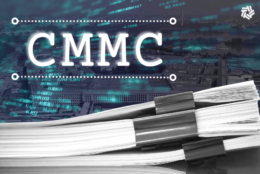
Appeals court allows Trump EOs on labor relations to go into effect. What happens next?
Jeff Neal argues that executive orders against collective bargaining and flip-flopping FLRA majorities are not the way to make fundamental changes in civil service...
This column was originally published on Jeff Neal’s blog, ChiefHRO.com, and was republished here with permission from the author.
On Tuesday, the U.S. Court of Appeals for the D.C. Circuit reversed a ruling by the U.S. District Court for the District of Columbia that barred implementation of key provisions of President Donald Trump’s executive orders regarding labor relations. Here is a more detailed explanation of what the executive orders did. The new ruling does not address the merits of the union arguments. It is a narrow technical ruling on jurisdiction, but it will have broad implications on collective bargaining government wide.
The court ruled that the district court did not have jurisdiction over the matter. Citing 5 U.S. Code Chapter 71, the three-judge panel said the unions had to address their complaints to the Federal Labor Relations Authority. Chapter 71 provides for judicial review of FLRA decisions. In 5 U.S. Code § 7123, it says “any person aggrieved by any final order of the Authority … may, during the 60-day period beginning on the date on which the order was issued, institute an action for judicial review of the Authority’s order in the United States court of appeals in the circuit in which the person resides or transacts business or in the United States Court of Appeals for the District of Columbia.”
The unions had argued, among other things, that the requirement to pursue the case via the FLRA would be burdensome and would enable many instances of what they considered to be violations of Chapter 71 requirements to continue for months or years before they could obtain relief. In making its decision, the D.C. Circuit said the statute “also establishes a scheme of administrative and judicial review. Administrative review is provided by [the FLRA], a three-member agency charged with adjudicating federal labor disputes, including “negotiability” disputes and “unfair labor practice” disputes. In negotiability disputes, the FLRA determines whether agencies and unions must bargain over certain subjects. In unfair labor practice proceedings, the FLRA resolves whether an agency must bargain over a subject, violated the duty to bargain in good faith, or otherwise failed to comply with the statute. The FLRA’s decisions in such disputes are subject to direct review in the courts of appeals.”
Related Stories

Another shutdown? Now is the time for Congress to act to protect federal workers and contractors
They went on to explain that Congress may establish means of review that preclude the district courts from being involved. In this case, they determined the language of Chapter 71 clearly requires most federal sector labor relations matters to be reviewed by the FLRA, with appellate review by the courts of appeals.
So what does that mean for federal labor relations? It is safe to assume that the Supreme Court is not going to reverse this decision. As the decision describes it: “On the present record, it appears that the statute provides the unions with several “administrative options” for challenging the executive orders before the FLRA, followed by judicial review. First, if an agency follows the executive orders’ goal-setting provisions while bargaining with a union, the union could charge in an unfair labor practice proceeding that the agency’s adherence to those provisions amounted to bad-faith bargaining in violation of the statute. The FLRA could then determine whether the agency had done so, and whether the agency may continue pursuing those goals during bargaining. Also, if an agency refuses to bargain over various subjects based on the executive orders’ governmentwide rules, the unions could charge in a negotiability or unfair labor practice dispute that the agency had refused to bargain over mandatory matters in violation of the statute. In response, the government could argue [as it does here] that 5 U.S.C. § 7117(a)(1) authorizes it to remove subjects from bargaining in this way, and the FLRA could then determine whether the government is correct.”
That means in many cases unions are going to have to attempt to engage in bargaining on matters that are precluded by the executive orders, have those proposals rejected by agencies and then file complaints with the FLRA in every case. In other cases, agencies will unilaterally change terms of contracts based on the executive orders and unions will file unfair labor practice charges with the FLRA. Rather than resolving the matters quickly, it is likely to take many months, or even years, to get test cases through the FLRA and the courts.
It is also likely that the FLRA is not going to reverse the policies in the executive orders. What we have seen over the 41-year history of the FLRA is that the authority’s decisions are very closely connected to the political views of the administration in power. When Democrats hold the White House, more subjects are negotiable, unions have more clout, and the decisions tilt toward unions and collective bargaining. When Republicans are in power, the authority is more likely to rule matters nonnegotiable, limit bargaining and generally be less friendly toward collective bargaining in general.
As someone engaged in federal labor relations for years, I have been surprised by the degree to which this political tilt occurs. Some of the decisions during the Obama administration were shocking in how far they attempted to expand bargaining. Likewise, some decisions during Republican administrations have been equally surprising. The bottom line is that the unions are unlikely to find the relief they seek from the FLRA. That means these cases that have been rejected by the D.C. Circuit based on the district court’s lack of jurisdiction will be back in front of the courts of appeals in the next year or two.
When cases are reviewed on the merits, we will see some of them decided in favor of the unions. Only those who are hostile to the idea of unions in government would argue that the executive orders are completely compliant with Chapter 71. For example, setting arbitrary limits on the amount of official time or how much official time any single union official might use is clearly negotiable under Chapter 71. Likewise, office space for unions, use of agency email and other facilities are all negotiable.
While it may very well be true that many of the previously enjoined provisions of the Executive Orders will eventually be overturned in court, for the time being the executive orders will be a substantial detriment to collective bargaining. Unions will be able to negotiate on fewer subjects, employees will have less recourse on discipline and performance matters, and the idea of any collaboration between management and unions will evaporate. There may be lasting harm to the concept of collective bargaining in government.
Is that a bad thing? Some would argue that unions have no place in government. They say that federal unions cannot bargain pay and benefits, and cannot strike, so they are left with bargaining on mostly minor issues that are less substantive. Others argue exactly the opposite, saying that because so many of the working conditions of federal employees are under management’s control, collective bargaining on the other issues is an important means of ensuring that employees have some voice in their workplace. They say managers often need someone to get in the way of hasty decisions, employees need representation in matters related to grievances and disciplinary actions, and unions provide an effective means of facilitating communications between management and employees.
My experience is that unions — like the people they represent — come in a lot of flavors. I have worked with unions that obstructed everything, but I have also worked with union leaders who were dedicated public servants driven by interest in the mission, the employees and the people the government serves. It is often true that agencies get the union they deserve. If an agency’s managers treat employees badly, do not listen to their concerns, and are abusive toward employees, they tend to generate union leaders who act the same way.
If I believed every manager would act in the best interests of the mission, the taxpayers and the people who do the work, I would say unions are not needed. Unfortunately that is not the case. From the manager who put an employee on leave restriction because he was undergoing chemotherapy, to the manager who disciplined an employee who would not go to bed with him, I have seen many cases of bad managers who are more interested in themselves than the mission. Providing employees with a voice is a good idea.
More Commentary
The conditions that made collective bargaining in the public interest have not changed. The more than 40 years of history with collective bargaining under Chapter 71 tells me that we should continue to have collective bargaining, but it is time for the details of Chapter 71 to be revisited. Other approaches to collective bargaining, such as nonexclusive representation, could revitalize collective bargaining, make unions more accountable to the employees they represent and ensure managers are held accountable when they do not act in the public interest.
Executive orders and flip-flopping FLRA majorities are not the way to make fundamental changes in civil service policy. A thorough review of the issues, with the voices of all parties and stakeholders heard, followed by congressional action to revise the law, is a far better approach. Is that likely to happen? As long as the rights of federal workers are a political issue rather than a matter of good government, no. The dysfunctional status quo is likely to prevail for many years.
Jeff Neal is a senior vice president for ICF and founder of the blog, ChiefHRO.com. Before coming to ICF, Neal was the chief human capital officer at the Homeland Security Department and the chief human resources officer at the Defense Logistics Agency.
Copyright © 2025 Federal News Network. All rights reserved. This website is not intended for users located within the European Economic Area.






